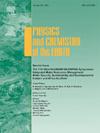Integrated reservoir characterization and simulation approach to enhance production of tight sandstone gas reservoir, Sulige gas field, Ordos Basin, China
IF 3
3区 地球科学
Q2 GEOSCIENCES, MULTIDISCIPLINARY
引用次数: 0
Abstract
The tight gas reservoir is a significant unconventional hydrocarbon resource of energy worldwide. However, the complex nature and heterogeneity make it challenging during exploration and production. Moreover, constructing and updating 3D reservoir model is vital for reservoir monitoring and surveillance. Such reservoirs require precise simulation strategies to accurately assess the hydrocarbon potential and formulate effective field development plans. Hence, this study delivers an efficient workflow integrating 3D reservoir modeling, history matching, and feasible development scenarios to enhance the gas recovery of the tight gas reservoir, block Su-6 of the Sulige gas field, China. Initially, history matching was verified so that the model aligned with the actual production data, reflecting a more accurate depiction of fluid flow dynamics within the reservoir. Manual matching was utilized by adjusting parameters, e.g., the relative permeability, pore volume, and transmissibility multiplier, by limited simulation runs to attain a good history match. Next, the most reliable matching model can serve as the base case to predict reservoir performance via the field development strategy. The optimal scenario, identified in the 3D gas reservoir model, was to add five infill horizontal wells, which generate 8.2 % extra gas recovery related to the reference case. This finding reveals that the accurate field development strategy is to enhance the effectiveness of the production via infill a horizontal well in the unswept area of the reservoir. The primary contribution of this research indicates the worth of the field development strategy of complex tight reservoirs. Moreover, it assists operators in understanding the fluid flow dynamics and production enhancement utilizing the production history portrait and field development scenarios of the tight sandstone gas reservoir of China or elsewhere.

求助全文
约1分钟内获得全文
求助全文
来源期刊

Physics and Chemistry of the Earth
地学-地球科学综合
CiteScore
5.40
自引率
2.70%
发文量
176
审稿时长
31.6 weeks
期刊介绍:
Physics and Chemistry of the Earth is an international interdisciplinary journal for the rapid publication of collections of refereed communications in separate thematic issues, either stemming from scientific meetings, or, especially compiled for the occasion. There is no restriction on the length of articles published in the journal. Physics and Chemistry of the Earth incorporates the separate Parts A, B and C which existed until the end of 2001.
Please note: the Editors are unable to consider submissions that are not invited or linked to a thematic issue. Please do not submit unsolicited papers.
The journal covers the following subject areas:
-Solid Earth and Geodesy:
(geology, geochemistry, tectonophysics, seismology, volcanology, palaeomagnetism and rock magnetism, electromagnetism and potential fields, marine and environmental geosciences as well as geodesy).
-Hydrology, Oceans and Atmosphere:
(hydrology and water resources research, engineering and management, oceanography and oceanic chemistry, shelf, sea, lake and river sciences, meteorology and atmospheric sciences incl. chemistry as well as climatology and glaciology).
-Solar-Terrestrial and Planetary Science:
(solar, heliospheric and solar-planetary sciences, geology, geophysics and atmospheric sciences of planets, satellites and small bodies as well as cosmochemistry and exobiology).
 求助内容:
求助内容: 应助结果提醒方式:
应助结果提醒方式:


